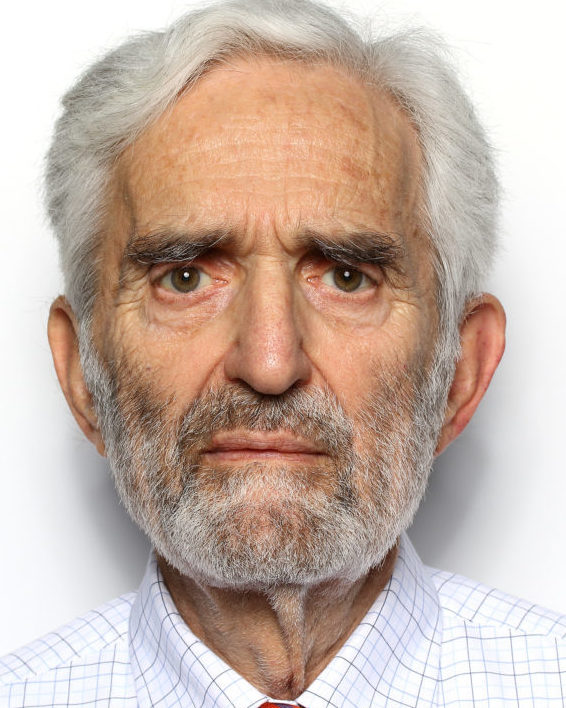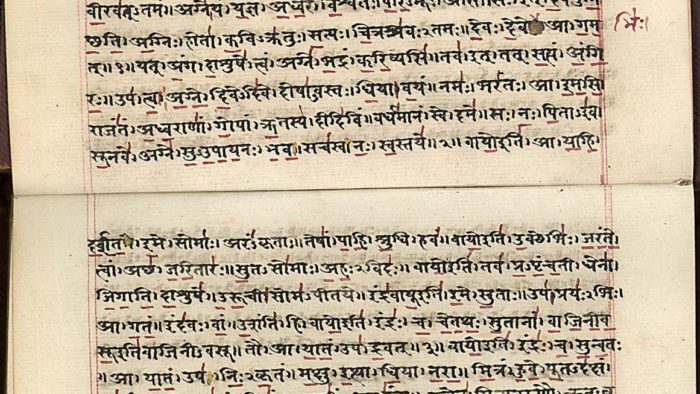Eighty year old Professor Nicholas Kazanas is a Greek Scholar of Sanskrit and Vedic civilisation and a long-time opponent of the Aryan Invasion Theory (AIT).
While Western scholars “posit as the urheimat or original habitation and place of diffusion of this culture some area in south-eastern Europe (Russian steppes, the Caucasus etc, anywhere from the Balkans to the Baltic sea),” Dr Kazanas himself firmly believes that linguistic and literary and recent genetic evidence establish “that the ancient cultures of Hittites, Greeks, Italians, Germanic peoples, Celts, Slavs and Baltic peoples, to mention the more prominent ones, originated in a much fuller and richer form of the Vedic civilisation, that is now lost and cannot be reconstructed but flourished in Saptasindhu.”
Part A of interview with Professor Kazanas. Responses have not been edited.
How did your interest in India first start. Was it academic or socio-cultural?
Prof Nicholas Kazanas: My interest in India began in my early 30’s when I was acquainted with the Upanishads and the Vedānta philosophy in my study of Philosophy. I had earlier studied English Literature at University College, London. By then I was also a follower of Jagadguru Shri Shantananda Sarasvati, Śankarācārya of Jyotir Maṭha (North). So I changed and went to study Sanskrit at the School of Oriental and African Studies, London University. I had to read the Upanishads in the original. I subsequently did postgraduate studies in Poona and Varanasi. I added to my interests the Rigvedic hymns. Some of these help to define the protohistory of India, others contain profound Vedantic philosophical thought and others are exquisite poetry. In fact, there is not a single good poetic aspect in Greek, Latin or Germanic (or in modern) poetry that is not found in the RV. Moreover, some hymns state clearly that all divinities are expressions of That One tad-ekam (RV 10.129.2; 1.164.46; etc).
To be frank, my interest in India is not so much in the modern country and its culture or religions but in the source and preservation of the Vedic Tradition which teaches fundamentally that All comes from the Will of Brahman and is that Substance all the time and that the Self of man is that same Brahman.

What are the steps you are taking to get a 'fresh thinking' on all matters of Indian proto-history" all over the world as is being done in your institute - Omilos Meliton?
Professor Nicholas Kazanas: For many years I published articles in learned Journals and gave many talks in Conferences and in Universities in India and the West arguing that the Vedic people were indigenous and not immigrants or invaders, appearing at 1700 or 2000 BCE. They were nomadic but also well-settled in the valleys of the old Sarasvati and the Sindhu rivers, in what should be known as the Saptasindhu, the land of the Seven Rivers, as seems to have been known in some hymns of the RV. I gathered many of these articles in two books, published by Aditya Prakashan, New Delhi (2009, 2015). I think I helped some, not many, Westerners and Indians change to this view. It was most dismaying to see so many learned Indians ignoring data that to me were so obvious and indisputable and adhering to the Aryan Invasion/Immigration Theory. I can understand communists and Christians promoting passionately the AIT but not so many other scholars nurtured in the native traditions. For the last two years I have ceased writing and lecturing on the subject. I felt that at 80 I was getting on and had to give more time to my School in Athens and our pursuit of practical Vedānta. I emphasise that this has been and continues to be my primary concern.
What is the status of Indology study in Greece? Has the popularity increased or decreased. Which are the main areas of interest and why?
Professor Nicholas Kazanas: The status of Indology in Greece is almost non-existent. There is a Department of Hindi in Athens University but nothing more. Few people attend - and those mainly to learn Hindi for commercial and other financial reasons. I think much of the cost is covered by the Indian government.
Very few people are interested in Indian culture beyond modern music and dancing and going on tours and holidays to various places in India, or the dinners and very occasional presentations of music and dancing organised by an Indo-Hellenic Society.
I myself gave three public lectures every year for several consecutive years on affinities between Greek and Indic cultures (yoga, religion, philosophy, epics, the arts, etc) but, in fact, few people attended and not once anybody from the Indian Embassy or from the University or from the Indo-Hellenic Society. Frankly, the Indian Embassy has never shown interest in promoting the traditional Indian culture. I doubt this will change.
How do Greeks see India? What does India mean to them?
Professor Nicholas Kazanas: For most Greeks India is just another country somewhere far in South-East Asia with exotic customs and arts, curious religions, colourful fabrics and much poverty - and it was invaded in ancient times by Alexander the Great and possibly visited by Pythagoras even earlier. There is a pretty late legend that god Dionusos came from Greece and civilised India and all Far East, even Japan, at c 7000 BCE (Dionusiaka, Nonnus of Alexandria, c 400 CE).
But as I wrote just above, the main interest is in holidays, music and dance - and food (Indian restaurants, Pakistani, Bangla-deshi etc have increased, thanks to immigrants also)! However, I suppose all this is true of most other Western countries.
What were the connections between the Vedic people/civilisation and the Greek people/civilisation?
Professor Nicholas Kazanas: I don't see any evidence of any early connexion (without precluding it totally) between Greece and Vedic India before Alexander’s visit in the late 4th cent. BCE. The cultural affinities are strong but fragmentary and could best be explained by common descent from an original unitary source.
Scholars in the West speak and write of a Proto-Indo-European culture (or civilisation) and, apart from those who like myself propound the indigenist view, they posit as the urheimat or original habitation and place of diffusion of this culture some area in south-eastern Europe (Russian steppes, the Caucasus etc, anywhere from the Balkans to the Baltic sea) except the larger Saptasindhu expanse.
I firmly believe, on the available linguistic and literary evidence and genetic material of the decades after 2000 CE, that the ancient cultures of Hittites, Greeks, Italians, Germanic peoples, Celts, Slavs and Baltic peoples, to mention the more prominent ones, originated in a much fuller and richer form of the Vedic civilisation, that is now lost and cannot be reconstructed but flourished in Saptasindhu.
The Greek and Vedic cultures have in common many linguistic features (more than other groups) and the idea of the Absolute One, of reincarnation, of lower and higher education, of ethical and meditational practices that lead to Self-realisation or Self-knowledge (ātma-jñāna or brahma-vidyā) and many other philosophical and social doctrines. In some papersI have described at length the affinities of the two cultures (e.g. Greek Philosophy up to Aristotle in Golden Chain of Civilisations by G. Pande (ed), PHISPC, Centre for Studies in Civilisation, 2007, N. Delhi; now revised and republished in In the Beginning by N. Kazanas, Aditya, 2019, N. Delhi).
But in every case the Vedic formulation is much fuller and far more helpful.
What are the areas in which research is being done and what are the areas in which it needs to be done?
Professor Nicholas Kazanas: Having for some years withdrawn from mainstream academic life, I don’t know for sure all the research that is being done in India and the West regarding Indic studies and would not like to comment on this. I can say, however, that all studies based on the wretched AIT are bound to contain large areas of error.
I helped Prof Mrs Soma Basu of Rabindra Bharati Univ. of Kolkata in bringing out a new edition (with translation in English and with copious grammatical and literary notes) of a Buddhist work Supriya Sārthavāha Jātaka, part of Bhadrakalpāvadāna, composed in what is known as Hybrid Sanskrit, after Kṣemendra’s Avadānaśataka, and found in various manuscripts. Such efforts are plainly very useful.
Research is necessary in many areas. But certain preconditions are required - one of them being the removal of the dates imposed by the AIT and, especially, ascribing the RV to the 4th at least millennium BCE. This will yield astonishing perspectives for many disciplines.
Another useful study would be to combine the terms of the traditional Paninian grammar with those of the traditional Western approach. This would benefit greatly all students of Sanskrit.
Indian linguists, or some of them, should study and know Comparative Indo-European linguistics since this has become an important branch in the West.
(To be continued)





